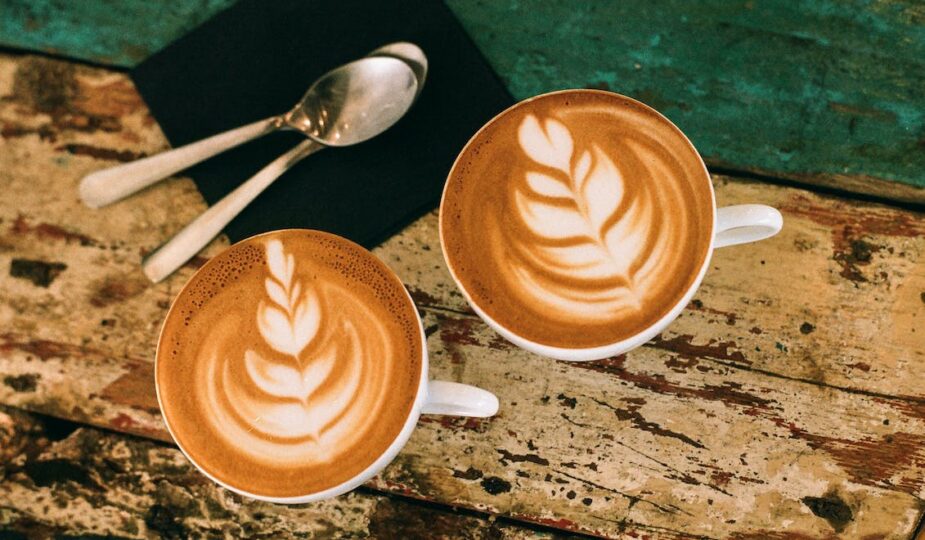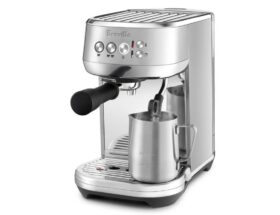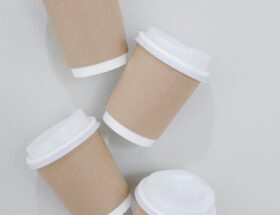
Coffee vs Latte: What’s the Difference?
Are you someone who can’t start their day without a hot cup of coffee? Or perhaps you’re a fan of the more indulgent and creamy latte? Whichever camp you belong to, it’s safe to say that coffee and lattes are two of the most beloved beverages in the world. But have you ever wondered about the differences between the two?
Coffee and latte are two popular hot beverages enjoyed by people all over the world. Both drinks are made from coffee beans, but there are some key differences that set them apart. Understanding these differences can help you make an informed choice when deciding which drink to order the next time you visit a café or make one at home.
Table of Contents
Coffee vs Latte: What’s the Difference?
Are you a coffee aficionado or a latte lover? While both beverages are derived from coffee beans, there are significant differences between them. Whether you prefer a strong, bold cup of coffee or a creamy, indulgent latte, understanding the distinctions can elevate your coffee-drinking experience. Let’s explore the differences between coffee and latte.
1. Ingredients
When it comes to the ingredients, coffee is relatively straightforward. It is made by brewing roasted coffee beans with hot water. On the other hand, a latte is made by combining espresso (a concentrated form of coffee) with steamed milk and a small layer of foam.
2. Flavor Profiles
Coffee offers a diverse range of flavors depending on the type of beans, roast level, and brewing method. It can exhibit notes of chocolate, caramel, fruit, or even floral undertones. A latte, on the other hand, has a mellower flavor. The addition of steamed milk decreases the intensity of the coffee, resulting in a creamier and slightly sweeter taste.
3. Strength
If you’re seeking a quick caffeine boost, coffee might be your go-to choice. Due to its preparation method, coffee tends to have a higher caffeine content than a latte. The espresso in a latte is diluted with milk, reducing its strength. However, the larger serving size of a latte can still provide a satisfying pick-me-up.
4. Texture
Texture plays a vital role in differentiating coffee from a latte. Coffee has a thinner consistency, resembling a black liquid. In contrast, a latte has a creamy and velvety texture, thanks to the addition of steamed milk. The layer of foam on top adds a pleasant and luxurious mouthfeel.
5. Presentation
When it comes to presentation, coffee is typically served in a traditional mug or a takeaway cup. Its appearance may vary depending on the level of milk or cream added. On the other hand, lattes are often served in tall glasses or cups. The layered look, with the espresso, milk, and foam visibly separated, adds an aesthetic appeal to the drink.
Variations and Flavors
While both coffee and latte can be enjoyed in their classic forms, latte offers a wider range of variations and flavors. For coffee lovers who enjoy experimenting with different tastes, latte provides countless opportunities. Popular latte variations include caramel latte, vanilla latte, mocha latte, and pumpkin spice latte, just to name a few. These variations add a delightful twist to the already delicious combination of espresso and milk.
By examining the ingredients, preparation method, coffee-to-milk ratio, serving size, and variations in flavors, it becomes clear that coffee and latte are distinct beverages. Whether you prefer the bold simplicity of coffee or the creamy indulgence of latte, both have their own unique charm and appeal.
Tips and Recommendations
Whether you’re a coffee connoisseur or new to the world of specialty drinks, here are some tips and recommendations to enhance your coffee or latte experience:
- Experiment with different beans: Try different types of coffee beans to discover the flavors that suit your taste buds. Whether it’s a bold and rich flavor or a subtle and fruity aroma, there’s a bean out there for everyone.
- Invest in a good grinder: Grind your coffee beans just before brewing to preserve the freshness and flavors. A burr grinder is recommended as it ensures a consistent grind size for better extraction.
- Understand the brewing methods: Learn about various brewing methods like pour-over, French press, or espresso machine. Each method has its own nuances and can bring out different characteristics in your coffee.
- Experiment with brewing ratios: Adjust the coffee-to-water ratio to achieve your desired strength. Start with the recommended ratio and then tweak it to find the perfect balance that suits your taste.
- Don’t forget water quality: The quality of water used affects the taste of your coffee. Use filtered water or bottled spring water for the best results.
- Add flavorings and syrups: If you enjoy flavored coffee or latte, consider adding syrups like vanilla, caramel, or hazelnut. Experiment with different combinations to find your favorite.
- Try alternative milk options: If you’re not a fan of dairy milk, there are plenty of alternative options such as almond milk, oat milk, or soy milk. Each adds a unique flavor profile to your latte.
- Experiment with latte art: Once you’ve mastered the art of making lattes, why not take it a step further and try your hand at creating latte art? It’s a creative way to elevate the visual appeal of your coffee.
Remember, the world of coffee and lattes is all about exploring and discovering flavors that excite your taste buds. So, embrace the journey and enjoy every sip!
Frequently Asked Questions
1. What is the difference between coffee and a latte?
Coffee is a brewed beverage that is made by extracting flavor from roasted coffee beans. It is typically served black or with a dash of milk or cream. On the other hand, a latte is a type of coffee-based drink that is made by combining espresso with steamed milk. It is often topped with a small amount of foam.
2. Which one has a stronger taste?
If you’re looking for a stronger taste, then coffee is the way to go. Since a latte contains more milk than coffee, it tends to have a milder and smoother flavor. Coffee, especially when brewed dark, can deliver a bold and robust taste that some coffee enthusiasts prefer.
3. Can I add flavors to both coffee and lattes?
Yes, absolutely! Both coffee and lattes can be customized with various flavors. Whether you prefer a hint of vanilla, a touch of caramel, or a sprinkle of cinnamon, you can enhance the taste of your drink with flavored syrups or powders. Be adventurous and experiment with different combinations to find your perfect flavor.
4. Are coffee and lattes equally caffeinated?
No, the caffeine content can vary between coffee and lattes. Generally, a standard cup of coffee contains more caffeine than a latte. However, it’s important to remember that the strength of the coffee and the size of the latte can affect the overall amount of caffeine. If you’re specifically looking for a caffeine boost, coffee might be the better choice.
5. Can I make coffee and lattes at home?
Absolutely! Brewing your own coffee or making a latte at home can be a fun and rewarding experience. There are a variety of coffee makers available that cater to different brewing methods, such as drip coffee makers, French presses, or espresso machines. To make a latte, you’ll need an espresso machine or a milk frother to create the perfect combination of espresso and steamed milk.
- If you prefer simplicity and convenience, you can also opt for instant coffee or coffee pods that work with single-serve machines.
- Investing in high-quality beans and experimenting with different grinding techniques can greatly enhance the flavor of your homemade coffee.
- Don’t forget to have fun and explore different latte art techniques to impress your friends and family!
6. Are there any health benefits associated with coffee and lattes?
Coffee, when consumed in moderation, can offer several health benefits. It is rich in antioxidants and may help reduce the risk of certain diseases, such as type 2 diabetes and Parkinson’s disease. Lattes, on the other hand, provide a good source of calcium and essential vitamins, thanks to the addition of milk.
- However, be mindful of the additional calories that can come from flavored syrups, whipped cream, or excessive amounts of sugar.
- Choosing low-fat or plant-based milk options can help make your latte a healthier choice.
- Always listen to your body and adjust your coffee or latte consumption according to your own health needs and preferences.
Remember, whether you’re sipping on a classic cup of coffee or indulging in a creamy latte, both can provide a delightful and energizing experience. The choice between the two ultimately comes down to your personal taste preferences and the kind of experience you’re seeking.
Conclusion
In conclusion, while both coffee and latte are popular drinks, they have distinct differences that make them unique. Coffee is a strong and bold beverage that is prepared in various ways, such as through an espresso machine or by using a drip coffee maker. On the other hand, latte is a rich and creamy drink made by combining espresso with steamed milk.
The main differences between coffee and latte lie in their preparation, taste, and ingredients. Coffee is known for its robust flavor and caffeine content, making it an energizing choice. Latte, on the other hand, has a milder taste and offers a velvety texture due to the addition of steamed milk.
When it comes to personal preference, it’s up to you to decide which drink suits your taste buds and desired caffeine kick. Coffee is perfect for those who enjoy strong and pure coffee flavor, while latte provides a more indulgent and creamy experience. Additionally, if you need a little boost of caffeine, coffee will be your best companion.
Now that you know the difference between coffee and latte, why not try both and see which one you prefer? You can experiment with different brewing methods, flavors, and milk choices to customize your coffee or latte to your liking. Whichever drink you choose, make sure to savor every sip and enjoy the unique pleasure that comes with each cup!
We would love to hear from you! Have you tried both coffee and latte? Which one is your favorite? Let us know in the comments below and join the coffee conversation!
Try Something New Today!
If you’re feeling adventurous, why not step out of your comfort zone and try a new coffee or latte variation? Whether it’s a seasonal flavor, a unique brewing method, or a creative latte art design, exploring the world of coffee can be a delightful journey. So go ahead, visit a local coffee shop or try out a new recipe at home. You might discover a new favorite!









